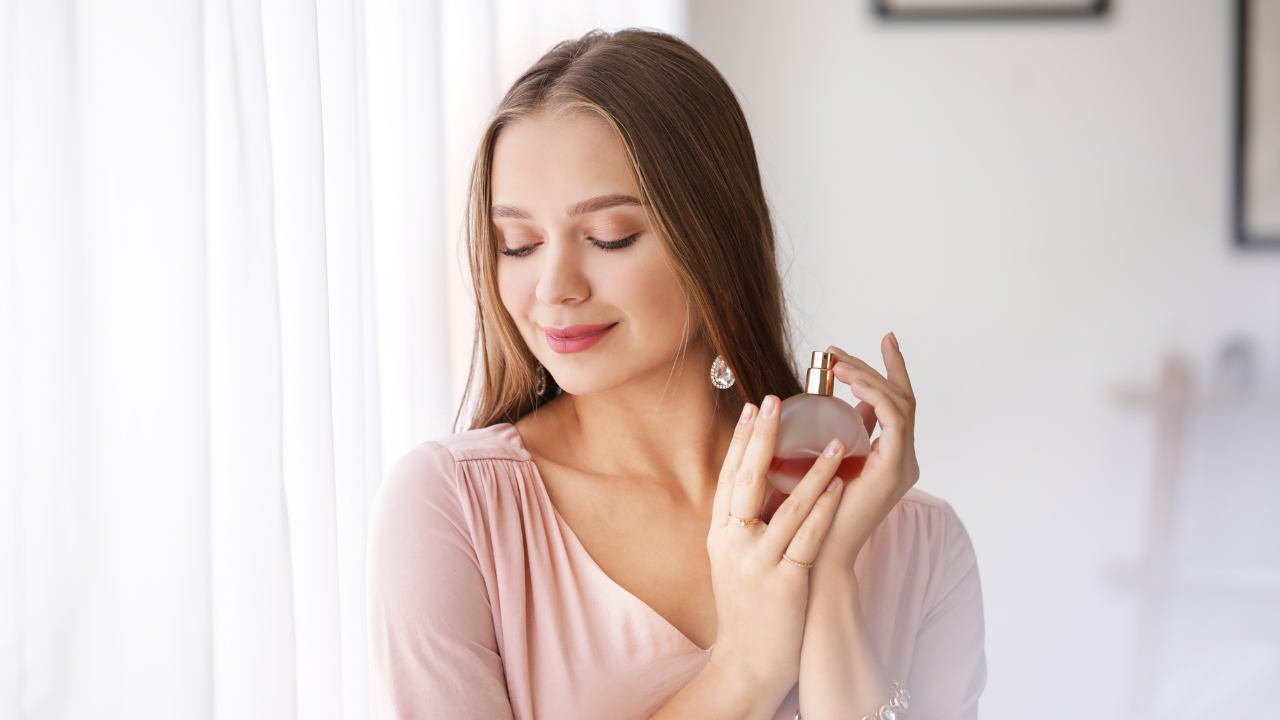Could “pretty” smells be making you sick?
28.06.2024
At the end of April I did a 3 day water fast. Even though I’m a big believer in the power of regular cleansing and have done many Master Cleanses and Liver Cleanses, this is only the second time in my life that I’ve experienced a water fast.
At the time I felt a bit “ho hum” about it, ie. I had no major detox, and didn’t really enjoy being on water only.
However, the most noticeable thing that occurred for me was a profound increase in my sense of smell. I’ve always had a great sense of smell, but it’s now off the richter scale.
That’s a wonderful gift (given my passion for these smelly things we call essential oils!). But conversely, it’s meant that I’ve also been smelling all those “bad” smells around us, and they’ve been equally heightened. Let’s take for example:
- The chemical deodorisers in public toilets that pump synthetic perfume into the air
- The strong smell of fragranced laundry detergent on the clothes of someone I’m sitting next to in a seminar
- The smell of commercial hair shampoo in a woman’s hair, or the creams that someone puts on their hands
That’s why I decided today to write about fragrances, and how to know what’s dangerous and what’s kind to your health. Enjoy!
If you can’t eat it, don’t wear it
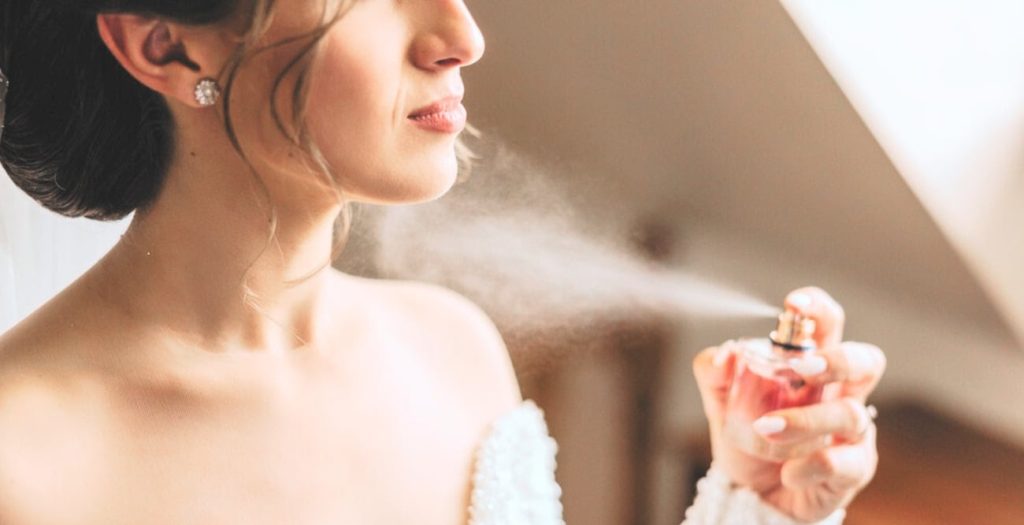
When someone is a heavy smoker, they become desensitised to the smell of cigarettes. It smells “normal” to them, even pleasant. But once they give up cigarettes, many of them flip in the opposite direction. My father was one of those. He loved his cigarettes during the war, when he was in the Dutch army. But after giving up cigarettes when he migrated to Australia, he became the most opinionated anti-smoker you could imagine. He couldn’t stand the smell of cigarette smoke, and went out of his way to avoid it.
For me, it’s the same with perfumes and fragrances. As a young adult I loved these “pretty” smells and had my favourite perfumes that I thought were so “divine”!!! As a teenager, I actually loved the “sexy” smell of antiperspirant (OK, I shudder as I write this!). But after contracting Glandular Fever (EBV/Mono) in my late teens and then ending up with 5 years of chronic fatigue, the light bulb finally went on for me.
The doctors couldn’t help me. They had no answers for chronic fatigue. So I turned to natural therapies. And slowly, ever so slowly, I changed my lifestyle and began eliminating toxins.
Then in my early 30’s I came across Gary Young, the founder of Young Living.
I loved Gary’s message about skin care and personal care. “If you can’t eat it, don’t wear it!” he would say. And so he set about creating a range of products that have no known harmful ingredients in them, many of which are plant based….like our Thieves Range of household products.
So I set about ditching all the commercial products I was using at the time, and one by one I switched over to Young Living’s natural alternatives.
Now, with my heightened sensitivity to smell, I can really understand why…..
Synthetic Fragrance – The Silent Killer
According to the Australian and State Government funded site Health Direct, about 1 in 3 people report having symptoms when exposed to fragrances in everyday products. This can be anything from asthma to hay fever, headaches and migraines, dizziness and breathing problems, not to mention congestion, rashes, nausea and even seizures.
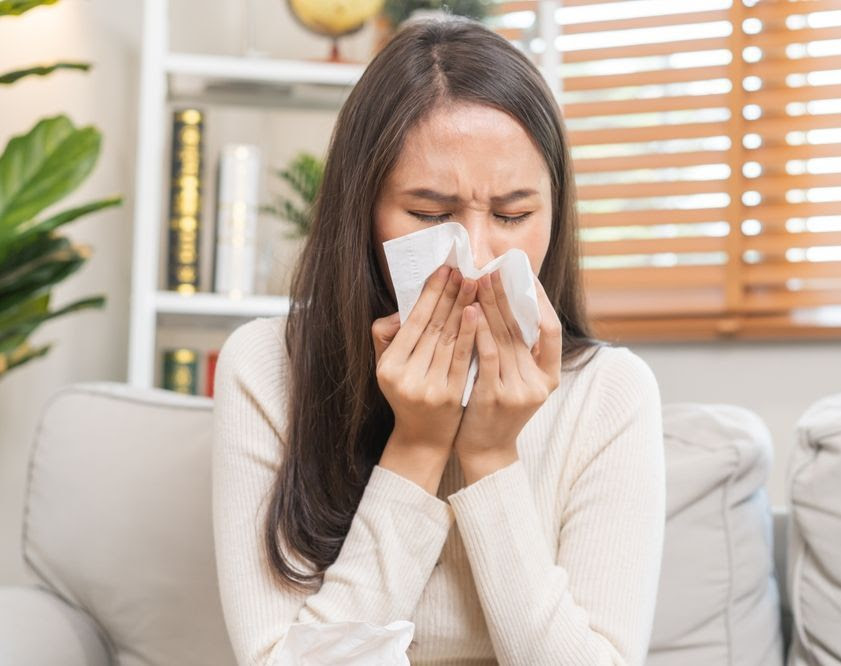
I have no problem with 100% natural aromas like our Young Living oils, which are guaranteed to be pure and therapeutic-grade, and free of any artificial and synthetic additives.
What sets me off (and many others like me) are the synthetic aromas found in many perfumes and personal care products….not to mention scented candles.
I find my nose starts to feel like someone’s lit a match inside it, and that match is burning all my sensitive membranes. My nose hurts, my eyes start watering…and I want to run!
In Australia, fragrances aren’t heavily regulated. Manufacturers can simply use a seemingly harmless word like “fragrance” or “parfum” on their ingredient list, rather than listing the specific chemical cocktail.
Companies know that smells evoke positive emotions within us, so most household products and cosmetics are scented. And because synthetic scents are so much cheaper to produce than natural aromas, many of those big companies turn to synthetic chemicals to recreate nature’s smells.
But did you know these synthetic fragrances contain phthalates (pronounced “thalates”), which are powerful endocrine disrupters. Even the tiniest amount plays havoc with our hormones?
These powerful hormone disrupters trick our body into increasing or decreasing hormone production. This is part of the reason why girls are entering puberty at such an early age1,2,3:
- In 1860, the average age for girls reaching puberty was 16.6 years
- In 2010, it was 10.5 years
And men exposed to phthalates are secreting less testosterone4, which is impacting fertility.
So why take the risk and expose yourself and your family to synthetic fragrances? Even if our body is strong and healthy and can withstand some of the effects of these chemicals, over time these chemicals still build up in our system to a point where they overload our livers, disrupt our hormones, undermine our health and contribute to obesity.
And it’s not only our own bodies we are harming. The biggest threat to our environment at present is not coming from the big companies. It’s coming from the everyday person, because of all the chemicals and toxins being used on our bodies and in our bathtubs and showers on a daily basis in our personal care and cleaning products, and also from pharmaceutical medications.
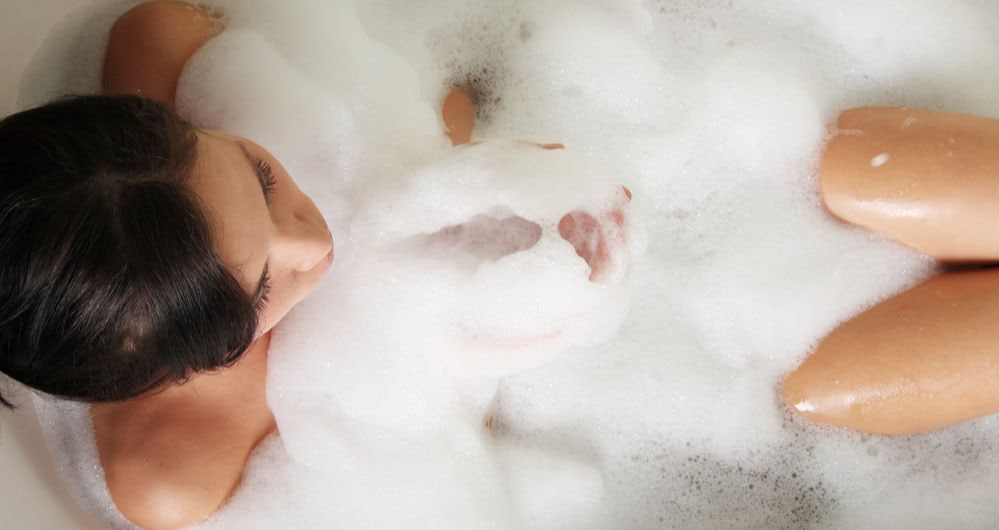
These chemicals wash off our bodies and down our sinks and toilets, and from there they make their way into our rivers and oceans. It’s no wonder researchers5 are now finding:
- frogs with 6 or 8 legs,
- male frogs with ovaries,
- female frogs with male genitals
What about Scented Candles?

According to Jaya Narain, a writer for the Daily Mail, there’s a growing body of evidence that suggests that perfume-scented candles pollute the air in your home with a cocktail of dangerous and potentially carcinogenic chemicals.”
That’s why I only use natural, organic, unscented beeswax candles in my home.
Whilst soy candles have become popular recently, soy isn’t a natural wax. Instead, it’s a heavy metal hydrogenated oil (ie. it’s bad for you!), because it’s undergone a chemical reaction with hydrogen, often in the presence of some type of heavy metal catalyst like nickel, palladium or platinum…. And it’s causing huge damage to our Planet.
96% of the soybeans grown globally are genetically modified (GMO) soy beans from Monsanto. And on top of being GMO, they are also exposed to a huge amount of pesticides and other chemicals during the farming process). Then many soy candles add palm oil in so that they become firmer, and don’t melt in warmer temperatures.
But sadly, soy and palm oil plantations are causing a huge problem with deforestation, which in turn affects so many of our endangered animals, including orangutans.
Did you know I used to work for World Wildlife Fund (WWF) when I was in my early 20’s? I’ve always been environmentally conscious, and WWF has written a great article on the conservation effects of the palm oil industry here.
Paraffin candles are no better. Paraffin wax is a by-product of petroleum fuel, and definitely not something you want to be breathing in. It’s like breathing in petrol. That’s not good for your health in any way!
Paraffin candles are no better. Paraffin wax is a by-product of petroleum fuel, and definitely not something you want to be breathing in. It’s like breathing in petrol. That’s not good for your health in any way!
And did you know that when soy and paraffin candles are burnt, they release a whole host of chemicals like formaldehyde, acetaldehyde, toluene, benzene, and acetone? These are potent carcinogens that can lead to cancer and other health problems.
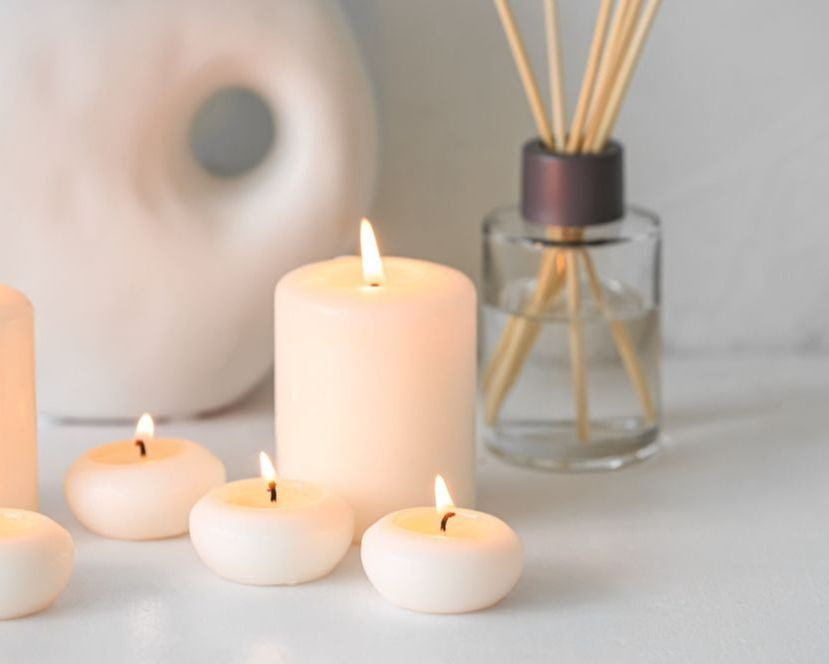
Fill your home with Nature
So what’s the solution? Fortunately it’s an easy choice, because we have the Young Living essential oils at our fingertips.
Fill your home with nature, rather than fake smells. This benefits everyone – human or animal – who steps into your home. Place 5 to 15 drops of your favourite essential oil(s) into an ultrasonic diffuser, and you have the perfect way to bring all the benefits of nature’s magic into your home.
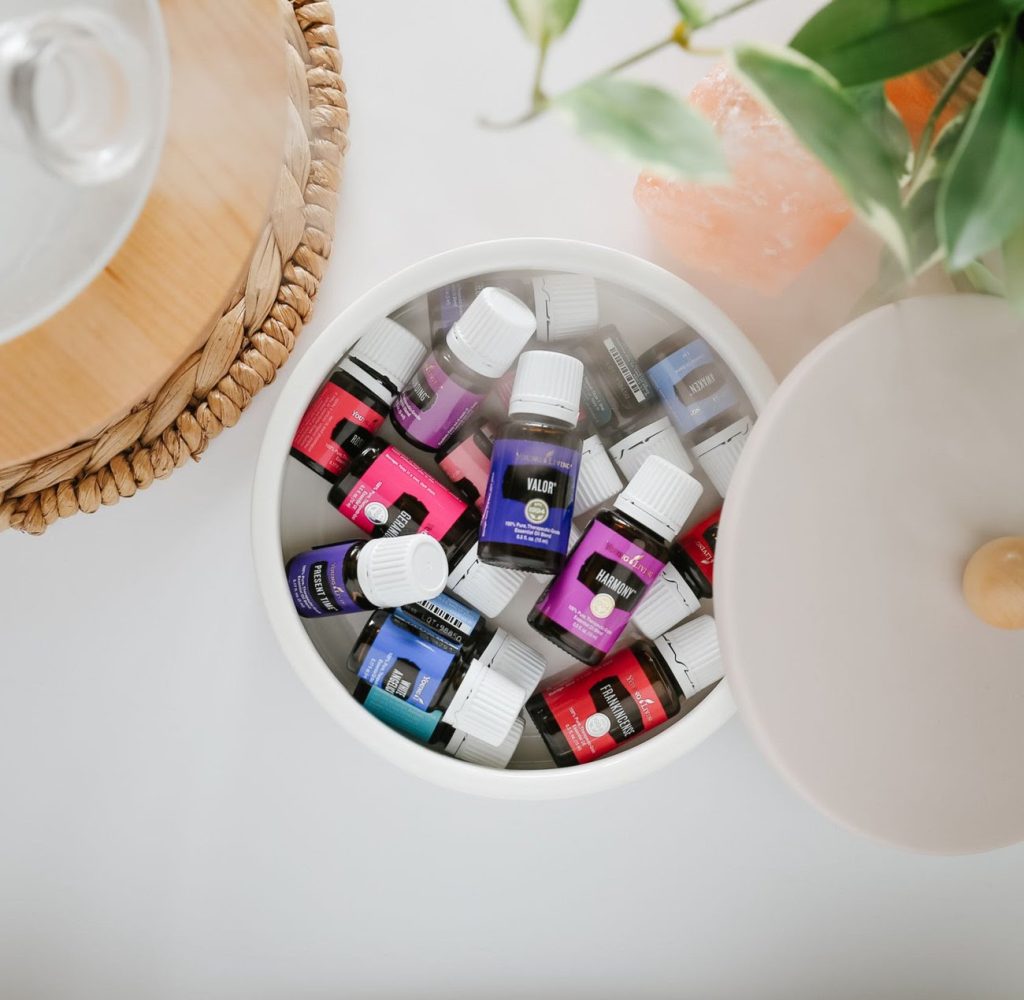
There are sooooo many wonderful oil blends to choose in Young Living, so look through the range of singles and blends until you find some that call out to you.
I particularly love diffusing oil blends. That way I don’t need to know what oils smell nice with what other oils. It’s all there for me, pre-formulated and named. I just need to know what I want to achieve from the smell.
Do I want Transformation, Joy, Release, Surrender, Inner Child, Highest Potential, Dream Catcher, Inspiration, Peace & Calming, Stress Away, En-R-Gee, Gratitue, or something else? It’s all there waiting for us to explore. With such a wonderful range to choose from, what oil will you diffuse tonight?
References:
1. Could exposure to phthalates speed up or delay pubertal onset and development? A 1.5-year follow-up of a school-based population, by Y. Zhang, Y. Cao, H. Shi, X. Jiang, Y. Zhao, X. Fang and C. Xie, Environment International. 2015 Oct; 83:41-9. Doi:10. 1016/j. envint.2016.06.005. Epub 2015 Jun 12.
2. Effects of Environmental Endocrine Disruptors on Pubertal Development, by Samim Ozen and Şükran Darcan, Journal of Clinical Research into Pediatry and Endocrinology. 2011 Mar; 3(1): 1–6. Published online 2011 Feb 23. doi: 10.4274/jcrpe.v3i1.01
3. http://www.nytimes.com/2012/04/01/magazine/puberty-before-age-10-a-new-normal.html?_r=3
4. Phthalates might interfere with testicular function by reducing testosterone and insulin-like factor 3 levels, by W.H. Chang, S.S. Li, M.H. Wu, H.A. Pan and C.C. Lee, Human Reproduction. 2015 Sep 18, pii: dev225 [Epub ahead of print]
5. From documentary “Poisoned Waters” (by Pulitzer Prize-winning journalist, Hedrick Smith)
Here’s how to order your therapeutic-grade essential oils:
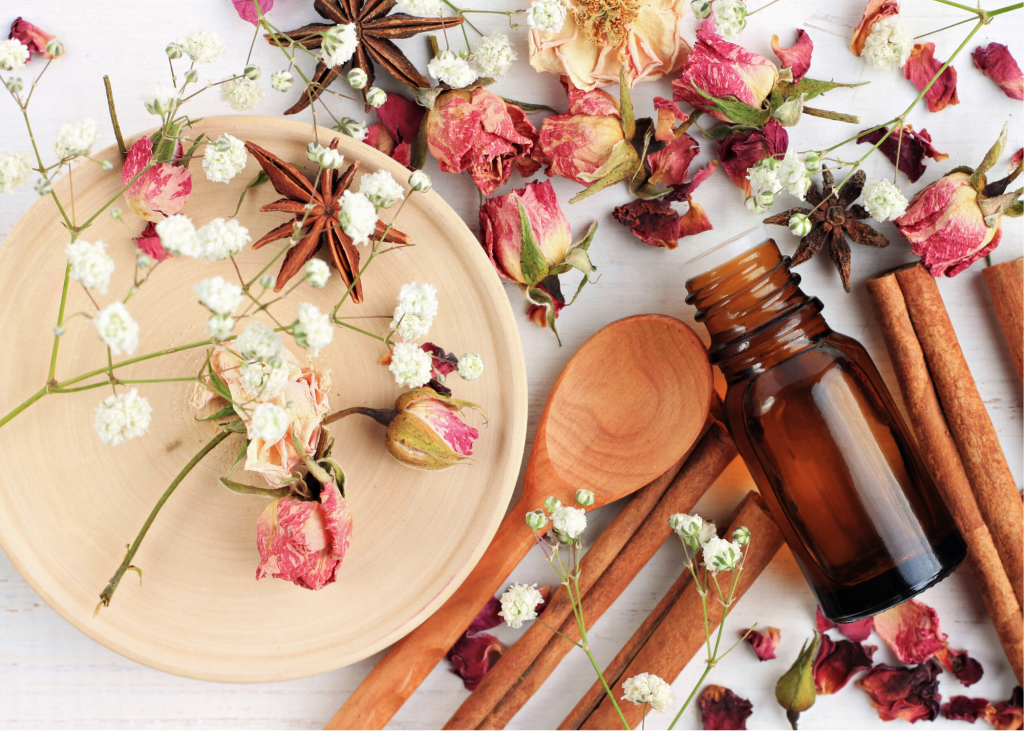
If you already have your own wholesale account with Young Living, you can order through the shopping cart on your virtual office, or via phone or live chat with your local Young Living office.
If it’s been more than 12 months since you’ve ordered, or if you’ve never set up an account, please reach out to the person who introduced you to Young Living.
You will need their member number when you place your first order.
If you have lost touch with them, or need any other assistance, we are here to help. Simply click on the button below, and we’ll be in touch to assist you and help answer your questions.
